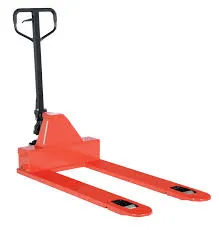


Understanding Small Electric Hoists Efficiency and Versatility in Lifting Solutions
Small electric hoists are indispensable tools in various industries, providing efficient and reliable lifting solutions for tasks that require moving heavy objects. These compact devices are designed to lift loads that typically range from a few hundred pounds to several tons, making them ideal for workshops, warehouses, construction sites, and even home use.
The primary advantage of small electric hoists is their ease of use. Unlike manual hoists that require significant physical effort, electric hoists operate with the push of a button. This automation not only saves time but also significantly reduces the risk of injury associated with manual lifting. Workers can simply attach the hoist to a suitable power source, secure the load with appropriate rigging, and operate the hoist from a safe distance.
One of the most appealing aspects of small electric hoists is their versatility. They can be used for a variety of applications, including lifting automotive engines, moving heavy machinery, and hoisting materials to elevated workspaces. Many models are portable, allowing users to easily move them from one location to another. Additionally, they can be mounted on ceilings, beams, or frameworks, providing maximum lifting height without occupying valuable floor space.
Small electric hoists are available in various configurations, including single-phase and three-phase models. Single-phase electric hoists are typically used for lighter loads and are suitable for home and small workshop applications, while three-phase models are ideal for industrial settings where heavier lifting is required. Key specifications to consider when selecting a hoist include load capacity, lifting height, and speed.

Moreover, safety features are essential in small electric hoists. Most modern models come equipped with overload protection, which prevents the hoist from lifting weights beyond its specified limits. Additional safety mechanisms may include emergency stop buttons, limit switches to prevent over-travel, and fail-safe brakes that hold the load in place if power is lost. Utilizing these safety features is crucial for maintaining a secure working environment and preventing accidents.
Maintenance of small electric hoists is relatively straightforward, which further enhances their appeal. Regular inspection of cables, hooks, and other components is vital to ensure the hoist operates smoothly. Routine lubrication and adherence to manufacturer guidelines can prolong the lifespan of the hoist and enhance its performance.
The energy efficiency of small electric hoists is another important consideration. With advancements in electric motor technology, many modern hoists consume less power while providing superior lifting capabilities. This not only reduces operational costs but also minimizes environmental impact, making them a more sustainable choice in today’s energy-conscious world.
In conclusion, small electric hoists are essential tools that combine efficiency, versatility, and safety into a single device. Their ease of use allows workers to complete lifting tasks quickly and safely, making them invaluable in a wide range of applications. Whether in industrial settings or for personal projects at home, investing in a small electric hoist can significantly enhance productivity and simplify lifting tasks. As technology continues to advance, we can expect further improvements in hoist designs, making these tools even more effective and reliable in the years to come.



